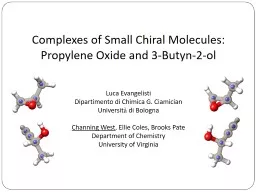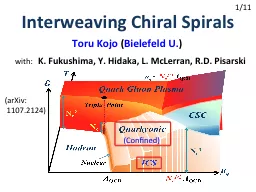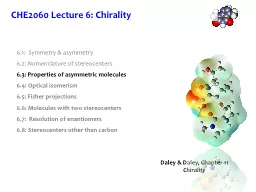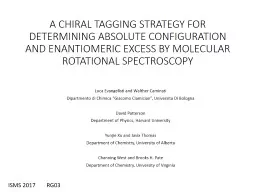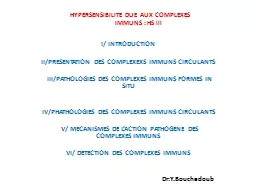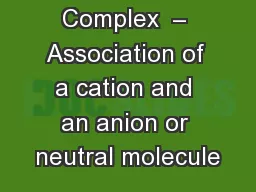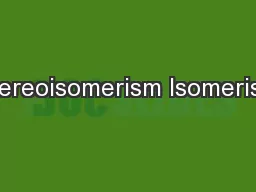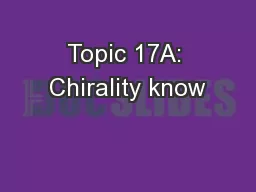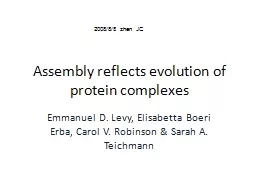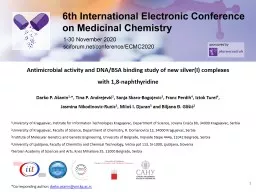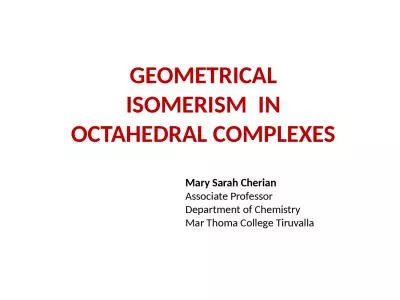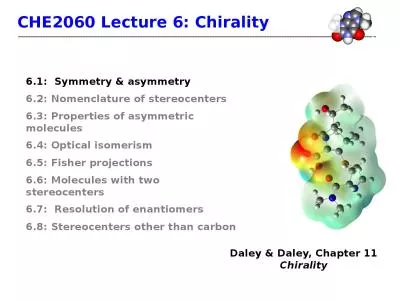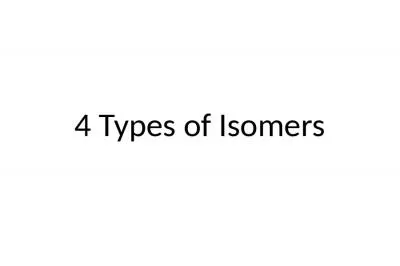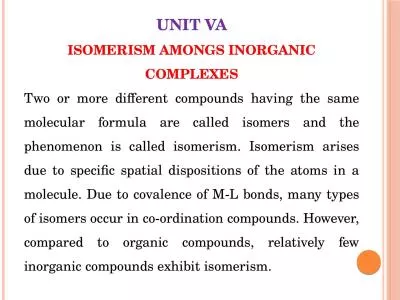PPT-Complexes of Small Chiral Molecules:
Author : briana-ranney | Published Date : 2018-02-18
Propylene Oxide and 3Butyn2ol Luca Evangelisti Dipartimento di Chimica G Ciamician Universit à di Bologna Channing West Ellie Coles Brooks Pate Department
Presentation Embed Code
Download Presentation
Download Presentation The PPT/PDF document "Complexes of Small Chiral Molecules:" is the property of its rightful owner. Permission is granted to download and print the materials on this website for personal, non-commercial use only, and to display it on your personal computer provided you do not modify the materials and that you retain all copyright notices contained in the materials. By downloading content from our website, you accept the terms of this agreement.
Complexes of Small Chiral Molecules:: Transcript
Download Rules Of Document
"Complexes of Small Chiral Molecules:"The content belongs to its owner. You may download and print it for personal use, without modification, and keep all copyright notices. By downloading, you agree to these terms.
Related Documents

